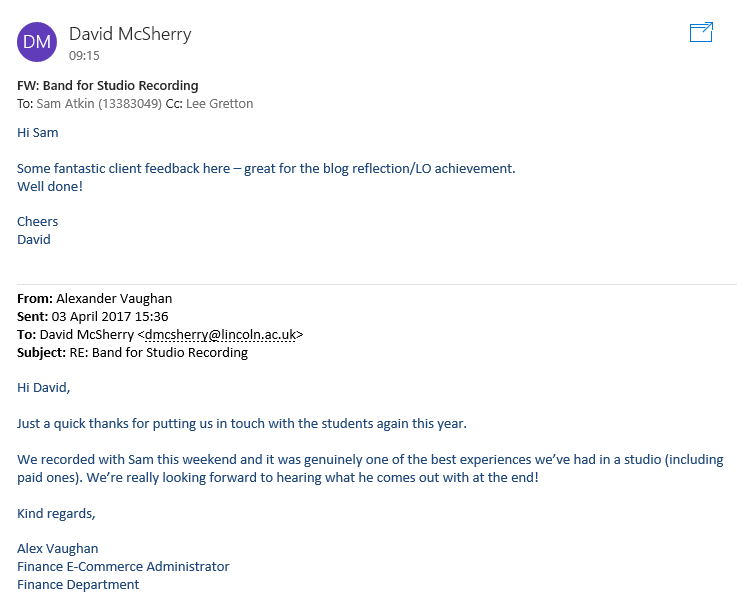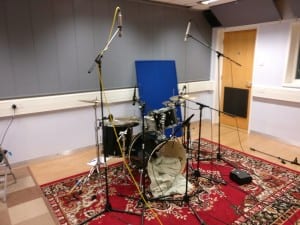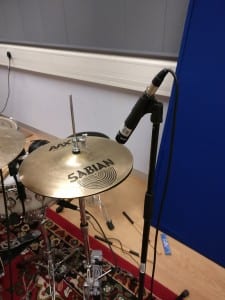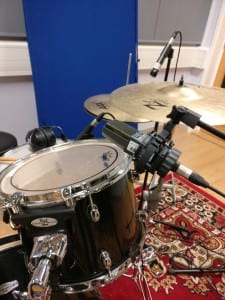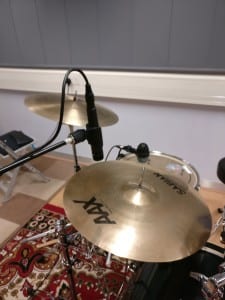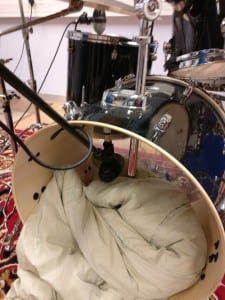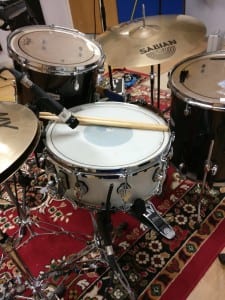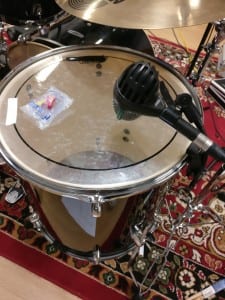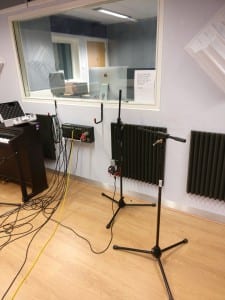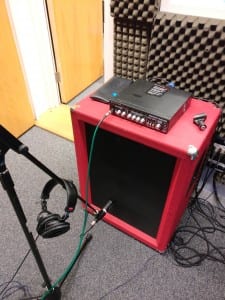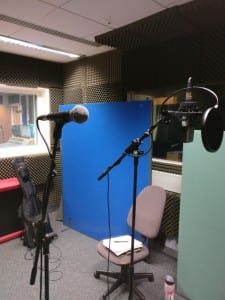In conclusion, the success of this project can be measured by the way that I have achieved my own learning outcomes. I enjoyed working with the client, thought it was a different kind of experience from the research-based project I did in semester A. While the research done for my learning outcomes has been extensive, the focal point of this module has been the client, which has given me valuable experience of industry-professionalism and of a more realistic type of project that audio producers work on. While there were some small dilemmas over the course of this project, I feel I overcame them successfully and all aspects, recording the band in particular, went smoothly.
The learning outcomes I set for myself are as follows:
- Capture drums in a way that betters my own previous work and is comparable in production to tracks listed in my influence playlist (LO1)
I believe that I have drastically improved the sound of drums on my work by way of capturing. The clear evidence is by listening back to the drums I recorded on my project for semester A. There is a post on this blog which directly compares the two and while a drum sound is subjective, there can be no doubting that the drums on this project sound far cleaner, more balanced and rounder in tone. While I have recorded them on several different projects in the past, drums has never been a key focus for me in the capture stage, rather that I’d just set the microphones up how I’d been taught and record from there. But the research I accumulated over the course of this semester has shown me several different techniques for recording drums that I have used successfully, and influenced me to try different things from the norm in order to get the recording I wanted. I experimented with microphone choices on drums as well as placement and differing amounts of microphones. Due to better placement than in the last project, each microphone had less bleed and therefore was cleaner in the mixing process. As a result the kit sounds whole and natural and I didn’t need to use a lot of artificial reverbs or noise gates. Overall I feel that the drum recordings I have done over the course of this semester have been far better than those I have done before, thanks in part to the research I did on the subject. The research has influenced the drum sound on the EP to be comparable to the tracks listed in my influences playlist.
- Mix drums in a way that betters my own previous work and is comparable in production to tracks listed in my influence playlist (LO2)
In a way the success of this learning outcome follows on from the capture of the drums which, as already mentioned, I felt was much better than in my previous work. The higher quality of capture meant that the drums were more flexible in terms of creative mixing choices. While I didn’t commit to anything drastically different from the industry standard, I did experiment with different techniques outlined in my research. Each individual part of the kit is balanced and easily audible within the final mixes of the tracks and the kick drum punches through the bass guitar without getting lost. Again, this is a contrast from the drums featured on my semester A project. The room microphone, while not heavily featured, is blended naturally throughout and is brought up in volume in quieter sections of tracks to add depth. The overheads sound crisp and lack in low end, allowing the kick drum and toms to come through naturally and the kit has been compressed in a way that isn’t obviously noticeable but balances the overall dynamic. The techniques found in my research which I have implemented in the mixing stage of this project have taught me a great deal about how to mix drums to sit naturally in a track and therefore I believe I have successfully completed this learning objective.
- Capture and mix a multi-layered set of vocal recordings that add power and space to a piece of music. I aim to improve on vocal recordings I have done in the past and experiment with new techniques. (LO3)
I feel that this learning outcome has been largely successful due to the way that the vocals sound on the EP. The vocals sit more naturally and with greater presence than they have done in my previous work and this is due to me putting more care and attention into both the capture and mixing stages of the vocals. In the recording sessions with the band I repeatedly asked for the vocalist to record further takes so that when it came to the mixing stage, I could experiment with placement and processing to add space and power. The double tracking, featured centrally in some places and panned left and right in other, hopefully achieves these two goals, as well as the backing vocal takes. Vocals, like drums is something I have often done as a necessity, rather than something I wanted to experiment with, so it has been useful to focus on vocals as an important entity, with creative choices and techniques picked out by influential producers. I feel that I have certainly bettered my own vocal recordings on previous projects which, again is evident through listening to my semester A project. I previously had a tendency to undervalue and under-mix vocals, which I have not done in this project. This objective therefore has been successful and I have learned a great deal.
- Liaise with the client in a professional and well-communicated manner, to ensure total client satisfaction. (LO4)
This learning outcome is the one that I am most confident that I have achieved, due to the feedback that I received from the artist themselves. As can be seen in my blog post ‘Client Feedback For Recording Sessions (LO4)‘, the band were really happy with how the session went. On the whole I felt that the communication I received from the band was good, however there were a few moments where I was a little frustrated by the lack of information. After waiting patiently though, I got everything I needed and really enjoyed working with the band in the studio. My communication with the band, which can be seen on this blog, remained professional throughout and therefore I feel that I have achieved my goal of liaising with the band in a well-communicated manner. As can be seen in the aforementioned post, the band seem to have been really satisfied about how our sessions went and as a result I can only think that this particular learning outcome has been achieved ideally.
Throughout the project I feel that I have bettered myself as a producer, and not just through improving at recording and mixing drums and vocals, and working professionally with an artist. I also feel that the guitar and bass recordings better anything that I have previously done and that my time-management and organisation has been as good as it ever has. The research I’ve done for the project has been really influential in shaping the way that the EP sounds and has given valuable insight into the techniques used by industry professionals. Problems that I have overcome over the course of this project include only being able to have one and a half full sessions with the band. While initially I was worried that this wouldn’t be nearly enough time to record a full four-track EP, with experimentation added on for my research, the planning I did leading up the recording dates made the sessions run so smoothly that after we had finished recording, we still had time left over on the booking. The communication with the band on my part was professional and they seem to be satisfied with how the sessions went. On reflection, other than some time worries, there weren’t any major problems in the project and from the moment it started, the artist and I worked well together and I’m happy with what we’ve achieved.
To conclude, I have achieved all of my learning objectives on this project to a level that I am personally very satisfied with and I am happy with other aspects, such as time-management and organisation, that I have demonstrated over the course of this semester.










